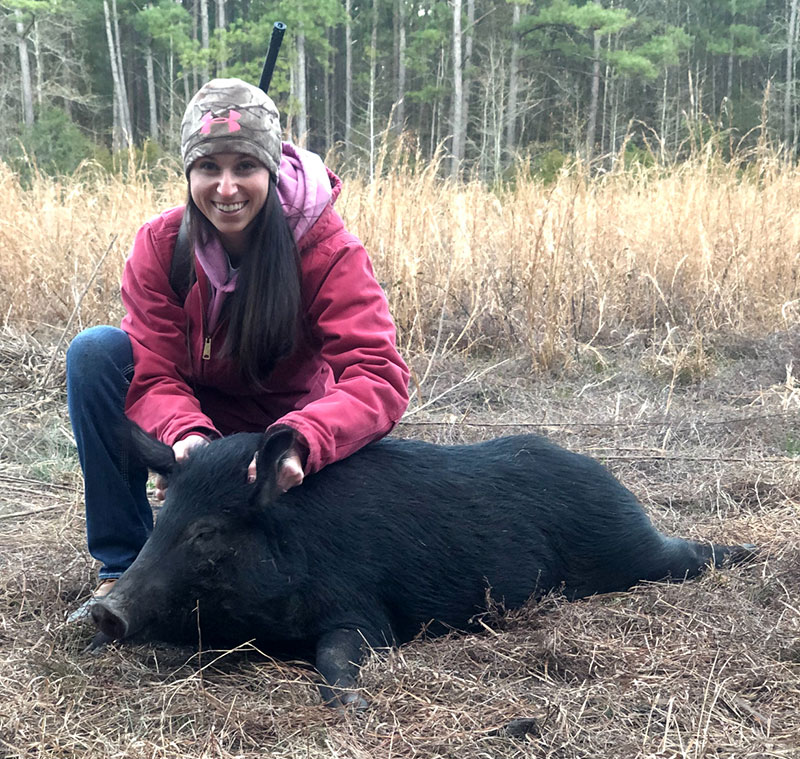
Hunters across the south continually beat down the woods after their favorite game animals. When the deer, duck, and turkey seasons are closed, a few small game animals remain to scratch the itch for diehard hunters, unless those hunters are in the swine belt. In some select parts of the south, wild hogs proliferate and can provide hunters with an alternative meat source and species to dial in on. And some unique methods will bait them into range and save a few bucks at the same time.
The wild hog is an animal that brings tears to all hunters and landowners across the country. But some are crying happy tears and others are crying sad. Hogs have been in the Carolinas for nearly 200 years. The population of hogs is growing every year, and they are found in nearly 80 percent of the counties in NC and SC. Currently, nearly a quarter of a million wild hogs roam the two-state area.
Wild hogs are destructive creatures, and they can multiply very quickly as they have high fecundity rates. Hunters and landowners should make efforts annually to reduce their wild hog population. Fortunately for marksman with a taste for blood, they can be hunted 365 days per year. And they are vulnerable to corn, potatoes, and really anything with a calorie. But hogs can quickly destroy a food source, either natural or artificial. However, there are alternative methods for baiting them to prolong the availability and usage at a particular location.
Hogs are opportunistic omnivores, and will basically eat anything they can find with a nutrient.
Most hunters utilize dent corn for baiting deer and hogs as it is an economical and readily-available option for feeding wildlife for hunting purposes. But the aggressive appetites of hogs can get expensive where hog populations are high. A large group of hogs can show up and obliterate 200 pounds of corn in 24 to 48 hours. Some hunters have demonstrated on remote trail cameras where hogs will show up on their corn piles and consume everything before leaving.
Nosy creatures
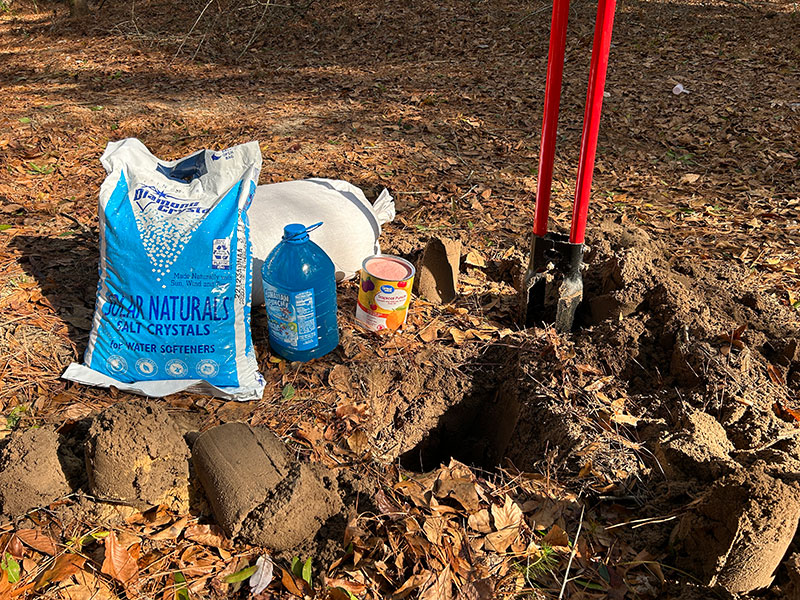
Researchers at Texas A&M University found hogs can detect food odors as far away as five to seven miles, and as deep as 25 feet in the ground. That’s incredible for any species on the planet. But hunters can take their unique biological abilities to their advantage to reduce baiting costs and prolong their use. Even though hogs live in large groups, they are not friendly companions at the dinner table. They will typically fight and battle over a tasty food source. Hunters can take advantage of this biological trait as well.
The time it takes hogs to consume food is directly proportional to the ease of availability. Or basically, they will consume it fast if it is easy to get. And that is where hunters can crank up the difficulty level for access to bait stations allowing them to last longer.
First of all, hunters should use the subterranean method by burying bait several feet in the ground. Having to excavate their meals will immediately make it harder to access. Hogs also don’t typically use their feet to excavate. They do all of their digging and rooting with their snouts. Burying corn several feet under the ground will make 50 pounds of corn last 500 percent longer than when just dumped on the ground. And hunters should bury food in a narrow hole too, so that it is difficult for more than one or two hogs to access the bait at any given time. Hogs will fight over it every step of the way until it is gone. And that brings up another important point for baiting hogs.
Corn by itself is an inexpensive method for feeding hogs. But some additives can be super beneficial using the subterranean method to make it nearly impossible for total consumption. The best hog baiting cocktails will be tough to completely consume. Other additives should be used to make these hog baiting stations hot spots for several months. This can increase the usage and prolong the efficacy of a bait station.
The best additives to use can be artificial or natural. But they should be difficult to consume in their entirety. Concentrated fruity drink powders, salt, fruit juices, and liquid sweet drink mixtures can be great additives to use. When all of these additives are mixed with the corn and buried three to four feet in the ground, hogs will battle over these bait sites for weeks trying to consume every last liquid and dry ounce of calories. And using this method really doesn’t take that much corn or additives. Fifty pounds of corn with additives can support a bait station for nearly a month, even in places where the hog population is high. Just be prepared for a large crater, the hogs will dig and dig until they get every last morsel. In some cases, these subterranean bait stations can last over a month with only one application for minimal cost. Using this method is economical and a tried-and-true method for maintaining hogs on your stand until you pick them off one at a time. It is also good to dig new holes and refuel these bait stations to keep these pigs coming and eating until they find a bullet in their brains.
Here is B&B’s Hog Heroin subterranean hog bait recipe that works every time.
B&B’s Hog Heroin Recipe
50 pounds corn
15 pounds salt crystals (for water softeners)
4 pounds Tropical Punch Drink Mix (any flavor)
1 gallon Hawaiian Punch Fruit Drink (any flavor)
Use post-hole diggers to excavate a hole 12 inches wide and four feet deep. Dump a layer of corn in the bottom, followed by 90 percent of the salt. Dump most of the corn on top of the salt crystals. Empty out most of the tropical punch mix and all of the liquid fruity drink container into the hole. Mix for a few minutes and then cover it up with several feet of dirt. Take the remaining corn, salt, and drink mix and sprinkle over the top of the ground in a three-foot radius around the buried mixture.
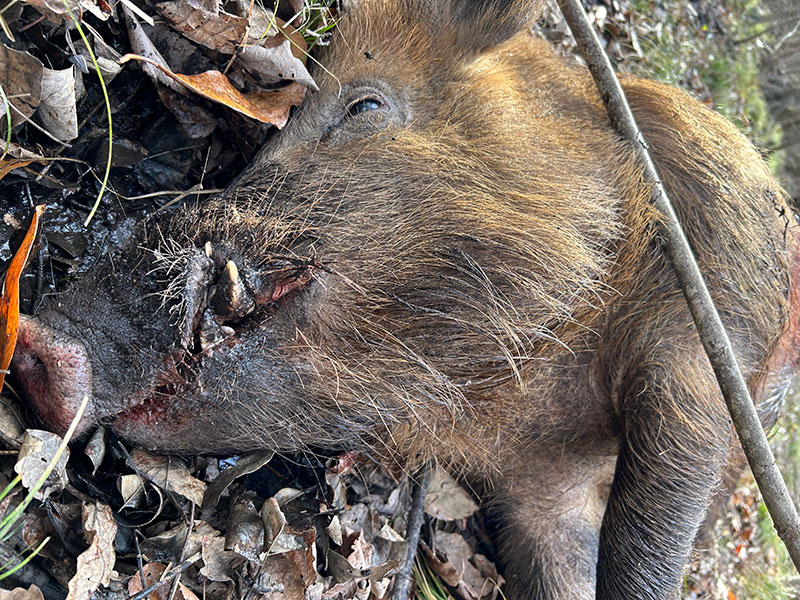
Bonus species:
Wild hogs are highly destructive, but they do offer hunters a year-round big game hunting opportunity that is challenging, fun, and can prodcue trophy-sized animals.


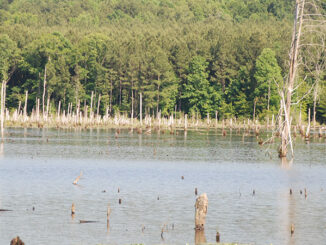
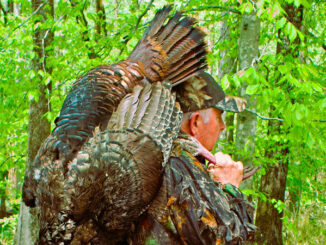

Be the first to comment